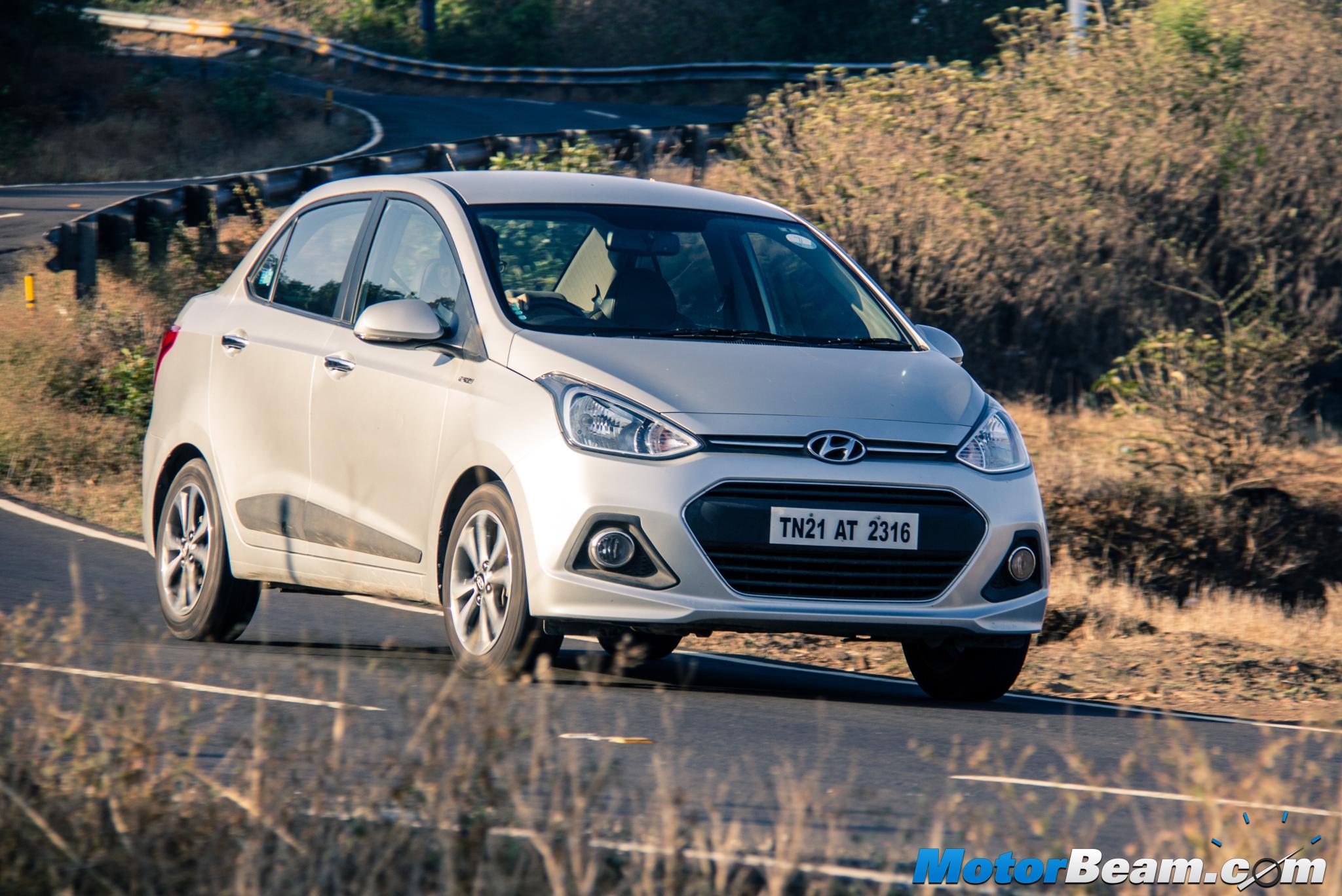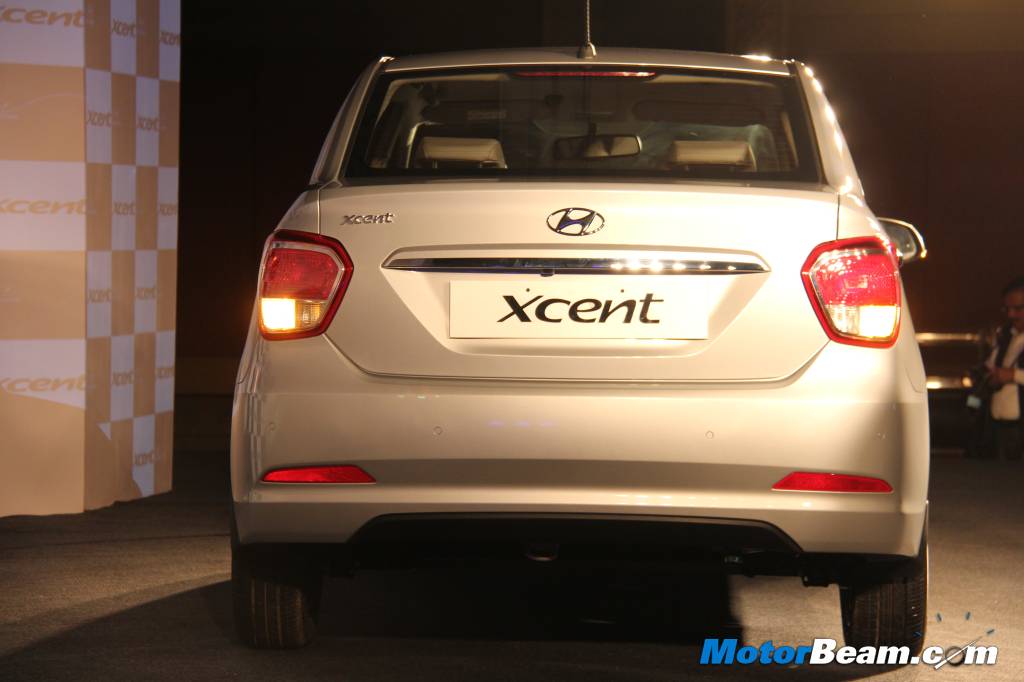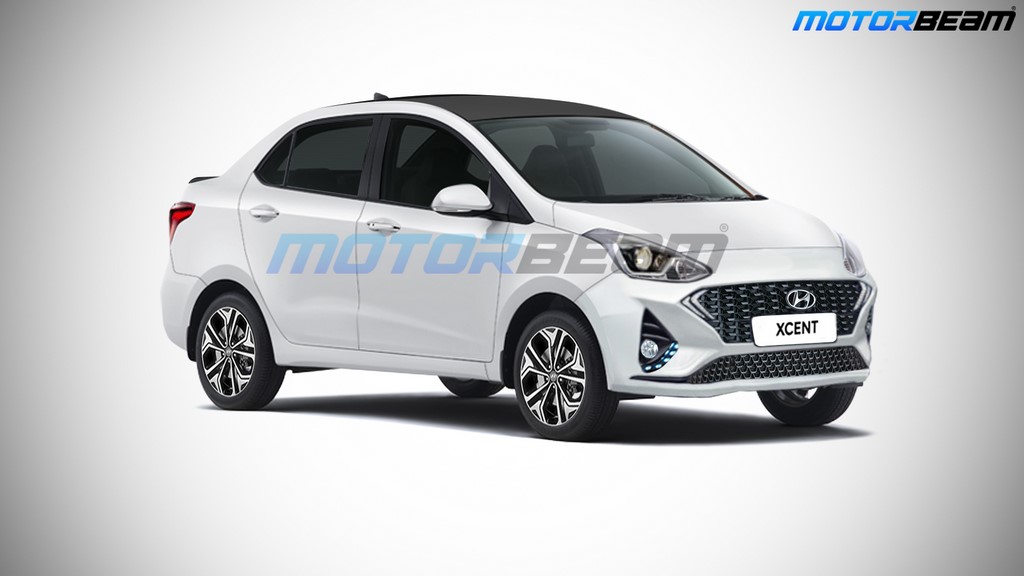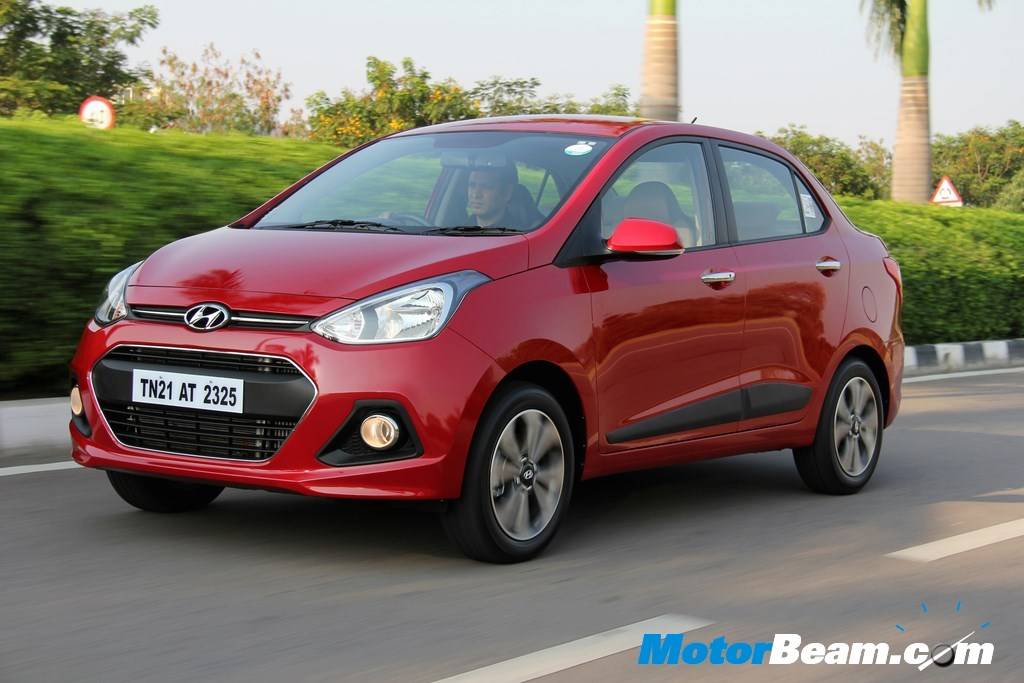
2014 Hyundai Xcent Review
Car Tested: 2014 Hyundai Xcent
Price OTR Mumbai: Rs. 5.52 – 8.90 lakhs
The Xcent is the most value for money compact sedan in the Indian market today.
You can either sell budget cars in massive volumes or more expensive cars to lesser people but usually not both. Defying this trend is Korea’s leading automaker which also finds its name in the top ten global automobile manufacturers in the world. Hyundai manages to sell an Eon at Rs. 3 lakhs while under the same roof a Rs. 30 lakh Santa Fe is successfully sold. 15 years back, thinking about Hyundai being so accomplished would have been difficult to digest but the company has come a long way. It has finally brought out a replacement to its second offering in India which was launched in 1999. We are talking about the Accent, a sedan which found a lot of success in the sub-continent has now finally found its spiritual successor in the form of the Xcent. The Hyundai Xcent is nothing but a Grand i10 with a boot and will play in the ‘ever in demand’ sub 4-metre compact sedan segment. But does the Xcent have the much needed X factor?
Motor Quest: Hyundai first launched the Accent in 1994, launching it in India in 1999 but when the third generation model arrived in 2006, they chose to keep the Accent running in India, re-branding the new model as the Verna. The Accent was discontinued last year and the Xcent fills its shoes.
While the front is identical to the Grand i10, the rear is all new but both don’t gel
Exteriors – One look at the Xcent and you aren’t going to skip a beat for sure. The Xcent is nothing more than a three box Grand i10 which makes it look ungainly from certain angles. While the hatchback is a smart looker, the sedan does not seem as appealing, possibly due to a very plain rear profile. Hyundai is known for making drop-dead gorgeous cars off late but in the case of the Xcent, the segment demands value and design is not a factor which will make or break a customers decision. The boot integration isn’t the best we have seen but it’s still better looking than those cars which are still nursing a chopped butt. Proportions aren’t as flowing as you would expect from a vehicle which competes against very established rivals and it’s more noticeable since Hyundai has set very high standards in the design department.
The boot is neatly integrated but the Xcent doesn’t wow you with its design
The front is identical to the Grand i10 and there is nothing to make out it your viewing the Grand i10 or Xcent but come to the side and the increased length is immediately apparent although everything is the same till the C-pillar. The side profile also flaunts the waistline moulding, which runs along the side. From both the side and rear profile, the styling doesn’t catch your fancy and the company should have made changes to the front of the car to make it look like a more balanced sub 4-metre offering (the taller height is what robs the Xcent from being a smooth flowing design). View it head-on at the rear and some will like the simple tail lights. The rear profile seems too simple and maybe a few more character lines would have helped its cause. Chrome is used just in the right dose on the boot and reflectors are provided on the bumper. The Xcent gets 15-inch diamond cut alloy wheels (on top variants) against 14-inchers offered on the Grand i10 and lower variants of the Xcent.
Dashboard is carried over from the Grand i10 and has good quality with a neat layout
Interiors – One of the best interiors in the hatchback segment is of the Grand i10 and the Xcent borrows the same cabin, thus giving Hyundai’s compact sedan a very appealing dashboard. Quality is excellent and there is ample amount of room inside the cabin. You definitely feel you are sitting in a car which is a segment up and that’s largely due to the attention to detail by the company. Features are galore and the Xcent is easily the most feature rich vehicle in its class. Bluetooth connectivity, steering mounted audio controls, 1 GB storage for the audio system, push button start with smart key, auto folding rear view mirrors, electrochromic mirror with parking camera and sensors, etc. and the list just goes on. The 2-din audio system offers pretty good sound quality and it is easy to pair your phone for Bluetooth streaming.
Rear seat now gets an arm rest, seat is reclined a bit and space is generous
While the inside of the Xcent is almost identical to the Grand i10, there are a few changes done to the sedan for meeting the expectation of saloon car buyers. The Xcent gets a climate control AC, reverse guide camera (the Grand i10 only gets sensors), closed lid in front of the gear lever and a rear seat arm rest with twin cup holders. The wheelbase is identical to the Grand i10 and there is a rear AC vent too. Space at the rear is plenty and the rear bench has been reclined a bit for added comfort. There is good amount of headroom (for under 6 feet passengers) and the doors open wide with the window area being generous for a good rear seat experience.
407-litre boot is the biggest in the compact sedan space, 7-litres bigger than the Amaze
The Hyundai Xcent is the narrowest car in its segment and thus seating five abreast isn’t the easiest thing to do. While other cars in the class aren’t five seaters, the Xcent too is best used as a four seater for longer journeys (the centre headrest isn’t adjustable while the other two at the rear are) but what goes in the Xcent’s favour is the nearly flat floor at the rear which helps to accommodate the middle passenger. The seats are quite comfortable but the rear bench lacks adequate under thigh support for tall passengers. The instrument cluster is well laid out but does not show average fuel economy and distance to empty. The AC deserves a special mention. In the burning sun, the AC managed to keep the car cool effortlessly with due help from the rear AC vent which enables faster and uniform cooling. There is no dearth of storage spaces inside the vehicle with abundant cubby holes for odds and ends. Even the glovebox is cooled. The boot is the largest in the segment (407-liters) and that was expected since the Grand i10 also has among the biggest boot in its class.
1.2 Petrol and 1.1 diesel engines are carried over from the Grand i10 hatchback
Performance – Hyundai has carried over the engines on the Xcent from the Grand i10 and we were expecting the 1.1-litre, 3-cylinder diesel engine to be replaced by the 1.4-litre, 4-cylinder engine from the i20 and Verna. However in the interest of cost and mileage, Hyundai has gone ahead with the 3-pot second generation U2 mill which gets increased output courtesy of a tune up job by Hyundai engineers. The turbocharger is now controlled by the ECU and this leads to better optimisation of the air flow to the engine. This diesel motor produces 72 PS and 180 NM torque, i.e. 1 PS more power and 22 Nm more torque (13% more over the Grand i10).
1.1-litre diesel is best in the mid-range and lacks top-end punch, revs to 4900 RPM
The increased ratings aren’t immediately apparent when you are behind the wheel but by no means does this engine feel underpowered. The engine has also been tweaked to counter the added weight of the Xcent over the Grand i10. Fuel is injected at 1800 bar pressure and this results in a better combustion and results in better fuel economy. Also, torque is available from as low as 1750 RPM making it easy to drive without too many gearshifts. The ARAI certified mileage exceeds that of the Grand i10 and is rated at 24.4 km/l (Grand i10 ARAI mileage is 24 km/l).
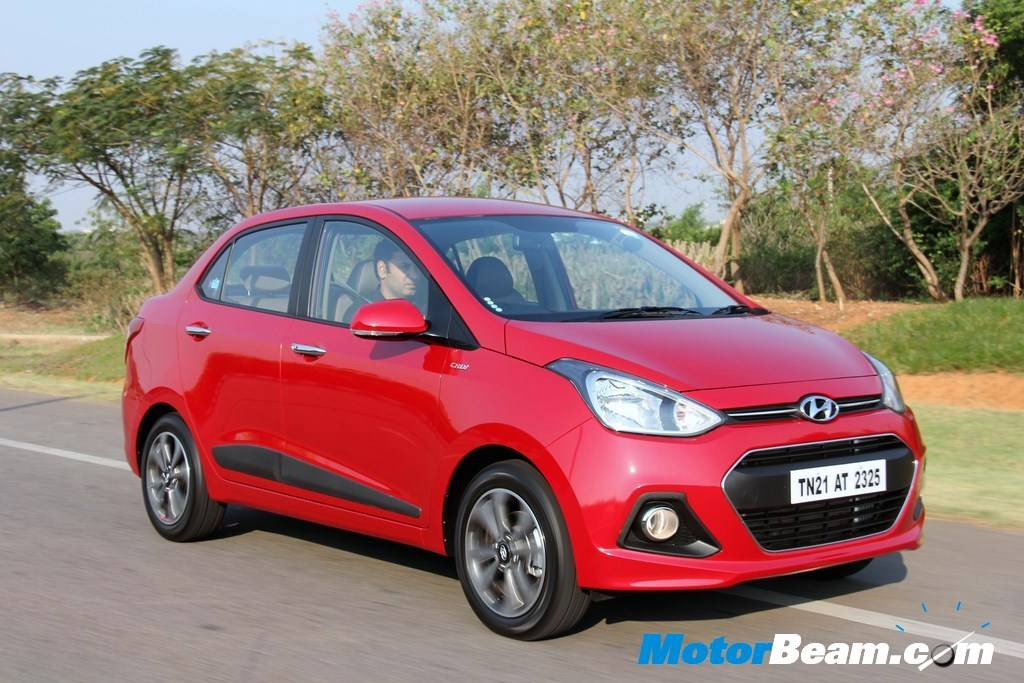
Being a 3-cylinder engine, one would expect this engine to have an inherent vibration but Hyundai has done an awesome job with the NVH. The engine vibrates a bit on startup and settles into a nice rhythm. You will barely notice it’s a 3-cylinder engine, such good is the damping. It is vocal at low end and as you whizz past 2000 RPM the mill settles down to be less intrusive. Mated to this engine is a 5 speed manual transmission with slick shifts and evenly spaced out ratios for both driving styles. The engine redlines at a little less than 5000 RPM with the first gear topping out at 40 km/hr, second at 80 km/hr and third at 120 km/hr. This engine has decent low-end pull with a strong mid-range but loses steam once past 3500 RPM and there is no thrust in the top-end. Cruising at 120 – 140 km/hr is relatively easy and even at these speeds, it does not feel strained at all. One can expect a real world mileage of 18 km/l. Another point to the driver’s advantage is the clutch, which is extremely light for a diesel car.
Petrol engine offers linear power delivery and is very good on NVH levels
Powering the petrol Xcent is the 1.2-litre Kappa powerplant which needs no introduction as it has been doing duty on various Hyundai cars for sometime now. Performance is linear and throttle response is urgent, the 4-cylinder engine offering terrific NVH levels with the motor being barely audible inside the cabin at idle. The top-end isn’t as creamy like its rivals but there is good low end pep for comfortably ambling around in the city. Hyundai is offering a 4-speed automatic for the petrol Xcent which should make town driving stress free. The petrol Xcent returns 19.1 km/l mileage as per ARAI (a 0.2 km/l improvement over the Grand i10) but in real world conditions, one should expect 12-14 km/l.
The Hyundai Xcent offers good handling and remains very composed at speed
Driving Dynamics – Hyundai has achieved a good balance of ride and handling with the Grand i10 and we feel the Xcent is even better. While the Xcent is not as engaging to drive as its rivals, it offers good manners at speed, remaining very stable even at triple digit numbers. The steering is light at low speeds, weighing up decently as you gather pace although it’s not really feedback rich when you start pushing it around corners aggressively. Body roll is well contained and the top-end models come with wider tyres which boost the grip on offer. There is no nervousness at high speeds and this is one thing Hyundai has truly addressed with the Xcent. The cabin is well insulated and you can hardly tell the speeds you are doing.
Ride quality on the Xcent is excellent and the brakes offer sure-footed stopping power
Ride quality is excellent at low speed and the suspension does its job very well. The suspension is stiffer as compared to the Grand i10 and this has been done to cater to the additional weight and towards improving road manners. Even as you gather speed, the ride quality remains good and there is a mature feel to the way the suspension has been set up. Bad roads do unsettle the car a bit but there is no bounciness, not even at the rear. Braking performance is good and the pedal has a reassuring bite for confidence inspiring stops. The compact dimensions when coupled with the light steering and excellent all round visibility mean the Hyundai Xcent is a very easy car to drive and manoeuvre in congested city conditions.
The Xcent doesn’t get ABS as standard on any trim, it’s optional on top trims
Safety – Hyundai has offered the Xcent in three variants (base, S and SX) and only the top spec model gets dual airbags as standard. ABS is optional on the S and SX trim. This is surely disappointing as Honda offers ABS as standard on all diesel variants of the Amaze while the SX and VX variants of the petrol Amaze come with ABS. Maruti Suzuki offers ABS as standard on the top-end Z trims.
The Xcent offers a lot of value with its feature rich interiors and frugal motors
Verdict – The Hyundai Xcent manages to please in quite a few areas. While the styling of the car is a mixed bag (some like it, some don’t while we feel most will grow to it), there are quite a few positives going for the Hyundai Xcent. The cabin has a lot of space and the interior quality is top notch with a plethora of features on offer and the Xcent is unmatched when it comes to equipment. While neither petrol or diesel engines will set your pulse racing, both powertrains offer good performance for city duties while also being frugal. The Xcent is easy to drive with predictable handling and very good ride quality. Factor in the aggressive pricing and the Hyundai Xcent easily emerges as the compact sedan for those looking for a no compromise vehicle at a compelling price.
The Hyundai Xcent scores high on Hyundai’s traditional strong values – good space, lots of features, excellent ride quality and frugal engines. All this coupled with an attractive price will seal the deal for most prospective compact sedan customers.
The rear of the Xcent grows over you with time, it’s not the most appealing sub 4-metre
What’s Cool
* Spacious Interiors
* Quality Cabin
* Mileage
* Ride Quality
What’s Not So Cool
* Styling won’t please everyone
* Diesel lacks power compared to rivals
Alternatives: Maruti Suzuki Swift DZire, Honda Amaze
The Xcent is well engineered to meet the requirements of majority of the customers
2014 Hyundai Xcent Specifications
* Engine: 1197cc, 16V, Kappa, VTT (P); 1120cc, 12V, U2 CRDI (D)
* Power: 83 PS @ 6000 RPM (P); 72 PS @ 4000 RPM (D)
* Torque: 114 Nm @ 4000 RPM (P); 180 Nm @ 1750-2750 RPM (D)
* Transmission: 5-speed manual (P & D), 4-speed auto (P)
* Top Speed: 165 km/hr (P), 160 km/hr (D)
* 0-100 km/hr: 13.28 seconds (P); 15.85 seconds (D)
* Fuel Consumption: 13 km/l (Petrol), 18 km/l (Diesel)
* Fuel Type: Petrol; Diesel
* Suspension: McPherson struts (Front), Coupled Torsion Beam Axle (Rear)
* Tyres: 165/65/14 (steel rim), 175/60/15 (alloy wheel)
* Brakes: Ventilated Disc (Front), Disc (Rear), ABS
* Safety: ABS, EBD, Dual Front Airbags, Reversing Camera
2014 Hyundai Xcent Dimensions
* Overall length x width x height: 3995 mm X 1660 mm X 1520 mm
* Wheelbase: 2425 mm
* Front Track/Rear Track: 1479/1493 mm
* Turning Radius: 4.7 metres
* Ground clearance: 165 mm (est.)
* Boot Volume: 407-liters
* Fuel Tank Capacity: 43 litres
* Kerb Weight: 950-1150 kgs (est.)
Further Reading –
Hyundai Xcent Long Term Review
Maruti DZire vs Honda Amaze vs Hyundai Xcent
Honda Amaze vs Tata Zest vs Hyundai Xcent vs Maruti DZire
Hyundai Xcent vs Ford Figo Aspire vs Honda Amaze vs Tata Zest


